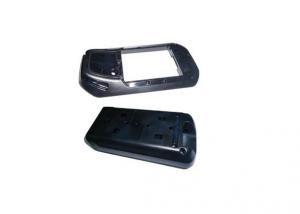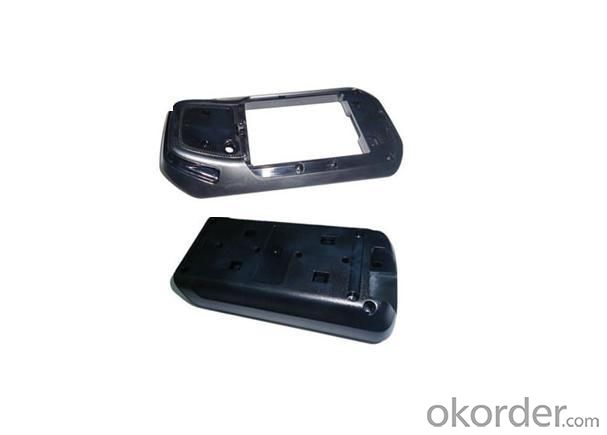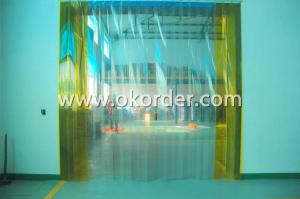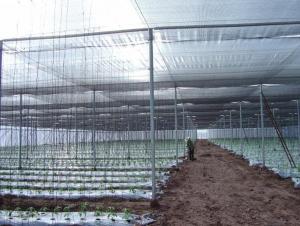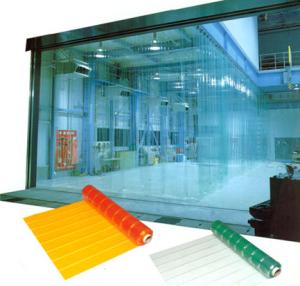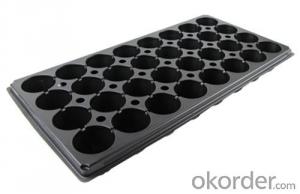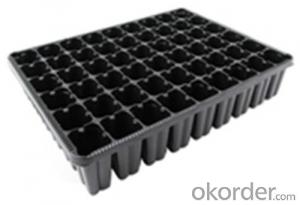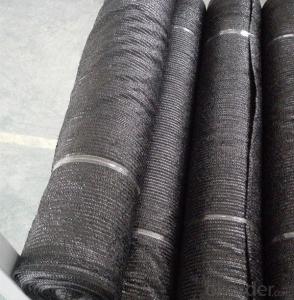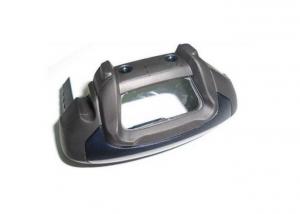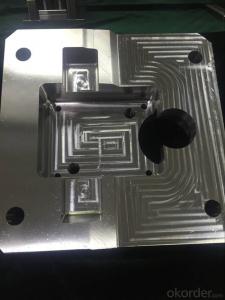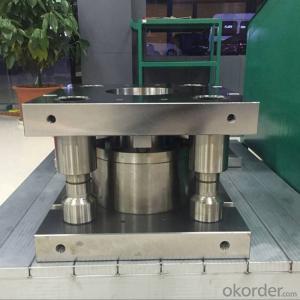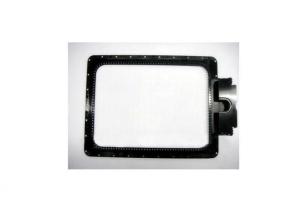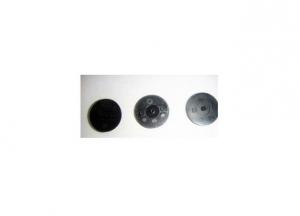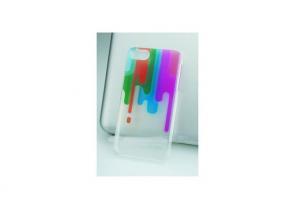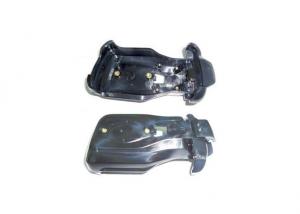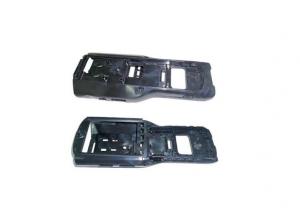China Plastic Mould for PDA Car Charge Base
- Loading Port:
- China Main Port
- Payment Terms:
- TT or LC
- Min Order Qty:
- 1 Set set
- Supply Capability:
- 100 Pieces per Month set/month
OKorder Service Pledge
OKorder Financial Service
You Might Also Like
Detailed Product Description
1.Standard HASCO
2.Finish: Texture MT11015
3.Material : PC
4.Mould Life: 300,000 shots
Plastic mould for PDA car charge base
Certificate: ISO 9001:2008
20 years experience
Name |
Plastic injection Mould products |
Plastic material |
ABS,PC,ABS+PC,PA66,HIPS,PE,PP…etc |
Cavity & Core |
NAK80,S136 HRC48~52° |
Mould base |
LKM , HASCO |
Nos of Cavity |
As customer rquest |
Mould Standard |
DME, HASCO |
Mould Runner |
Hot Runner,Cold Runner … |
Surface finish |
Texture, High glossy ,Painting,Chrome Plating |
Delivery time |
20-35 Days |
Mould Packing |
Wooden Box or as your requirement |
Our Advantages:
-- Competitive price.
-- Professional, excellent, but simple design.
-- High quality, reliability and long mould life.
-- Professional customised R&D program.
-- Diverse and mature craft.
-- Continuous service and supply.
-- Strict quality management.
-- High-quaity and integrated equipments:
-- High-speed processing center.
--Sodick wire cutting.
--Sodick cnc sinker EDM, EROWA Tooling System.
--40 sets plastic machinery with 80-1600MT.
--All our operations satify the standard of ISO9001:2008 certification.
--Exported products comply to requirements of Rohs certificate.
- Q: How does electronic plastic resist heat and flames?
- Electronic plastic is typically made from flame-retardant materials, which means it contains additives that help it resist heat and flames. These additives work by releasing fire-extinguishing gases when exposed to high temperatures, thereby suppressing the combustion process. Additionally, the structure and composition of electronic plastic are designed to have a high ignition temperature and low heat conductivity, which further enhances its ability to resist heat and flames.
- Q: How does electronic plastic contribute to the overall customization of electronic devices?
- Electronic plastic, also known as flexible or conductive plastic, plays a crucial role in enhancing the overall customization of electronic devices. Its unique properties allow for easy molding, shaping, and integration into various components, enabling manufacturers to create devices with personalized designs and form factors. This material can be printed or laminated onto surfaces, giving devices a sleek and seamless appearance. Additionally, electronic plastic can be engineered to be transparent, enabling the incorporation of displays or touch-sensitive surfaces, further enhancing customization options. Overall, the flexibility and versatility of electronic plastic empower device manufacturers to create unique, customized products that meet the individual preferences and demands of consumers.
- Q: Can electronic plastic be used for circuit boards?
- Yes, electronic plastic can be used for circuit boards. Electronic plastic, also known as conductive plastic, has conductive properties that allow it to carry electrical currents. It can be molded into various shapes, making it suitable for creating circuit boards that are lightweight, flexible, and resistant to moisture and chemicals. Additionally, electronic plastic can be manufactured at a lower cost compared to traditional circuit board materials like fiberglass or ceramic.
- Q: How is electronic plastic disposed of?
- Electronic plastic is typically disposed of through a process known as electronic waste recycling. This involves collecting and sorting the plastic components from electronic devices, which are then broken down and processed into reusable materials. The recycling process may include shredding, melting, and extrusion to transform the plastic into pellets that can be used for manufacturing new products. Proper disposal of electronic plastic helps reduce environmental impact and promotes a more sustainable approach to waste management.
- Q: What are the impact resistance properties of electronic plastic?
- The impact resistance properties of electronic plastic refer to its ability to withstand physical shocks or impacts without breaking or damaging the internal components of electronic devices. This property is crucial as it ensures durability and protection for electronic devices against accidental drops, vibrations, or other mechanical stresses. The specific impact resistance properties can vary depending on the type and composition of the electronic plastic used, but generally, it is designed to be strong and resilient to prevent damage to the delicate electronic circuitry inside the devices.
- Q: How does electronic plastic impact the thermal management of electronic devices?
- Electronic plastic can have a significant impact on the thermal management of electronic devices. This type of plastic is often used as a housing material for electronic components, and its thermal conductivity properties play a crucial role in dissipating heat generated by the devices. When the thermal conductivity of electronic plastic is low, it hampers efficient heat transfer, leading to increased temperatures within the device. This can result in reduced performance, shortened lifespan, and even potential damage to the electronic components. Therefore, selecting electronic plastic with high thermal conductivity is essential for effective thermal management and optimal performance of electronic devices.
- Q: What are the different color options available for electronic plastic?
- The different color options available for electronic plastic are typically varied and can include options such as black, white, gray, silver, blue, red, green, yellow, and many others. The specific color options may vary depending on the manufacturer and the intended use of the electronic device.
- Q: How is electronic plastic injection molded?
- Electronic plastic injection molding is the process of injecting molten plastic into a mold cavity under high pressure using an injection molding machine. The plastic is fed into a heated barrel, where it is melted and then injected into the mold through a nozzle. Once the plastic fills the mold cavity, it is cooled and solidified, allowing the molded part to be ejected. This method enables precise and efficient production of complex electronic components, ensuring high quality and consistency.
- Q: What are the different methods of processing electronic plastic?
- There are several methods of processing electronic plastic, including mechanical recycling, chemical recycling, and thermal recycling. Mechanical recycling involves sorting and shredding the plastic into small pieces to be melted and molded into new products. Chemical recycling uses various chemical processes to break down the plastic into its basic components, which can then be used to produce new plastic or other materials. Thermal recycling, also known as energy recovery, involves burning the plastic to generate heat or electricity. Each method has its own benefits and limitations, and the choice of method depends on factors such as the type of plastic and the desired end product.
- Q: How does electronic plastic affect the overall user learning experience of electronic devices?
- Electronic plastic can have a significant impact on the overall user learning experience of electronic devices. The use of high-quality electronic plastic materials can enhance the durability, aesthetic appeal, and ergonomics of devices, making them more comfortable and visually appealing for users. Additionally, electronic plastic can play a crucial role in ensuring the safety and reliability of devices, protecting internal components from external factors such as moisture or impact. By providing a seamless and reliable user experience, electronic plastic contributes to a positive learning environment by minimizing distractions, increasing the longevity of devices, and promoting user engagement and satisfaction.
1. Manufacturer Overview
| Location | Guangdong, China (Mainland) |
| Year Established | 2010 |
| Annual Output Value | |
| Main Markets | North America South America Eastern Europe Southeast Asia Africa Eastern Asia Western Europe Central America Northern Europe Southern Europe South Asia |
| Company Certifications |
2. Manufacturer Certificates
| a) Certification Name | |
| Range | |
| Reference | |
| Validity Period |
3. Manufacturer Capability
| a) Trade Capacity | |
| Nearest Port | Osaka Japan,Ravenna Italy,Montreal American |
| Export Percentage | 61% - 70% |
| No.of Employees in Trade Department | 6-10 People |
| Language Spoken: | English, Chinese |
| b) Factory Information | |
| Factory Size: | 5,000-10,000 square meters |
| No. of Production Lines | Above 10 |
| Contract Manufacturing | OEM Service Offered |
| Product Price Range | |
Send your message to us
China Plastic Mould for PDA Car Charge Base
- Loading Port:
- China Main Port
- Payment Terms:
- TT or LC
- Min Order Qty:
- 1 Set set
- Supply Capability:
- 100 Pieces per Month set/month
OKorder Service Pledge
OKorder Financial Service
Similar products
Hot products
Hot Searches
Related keywords
